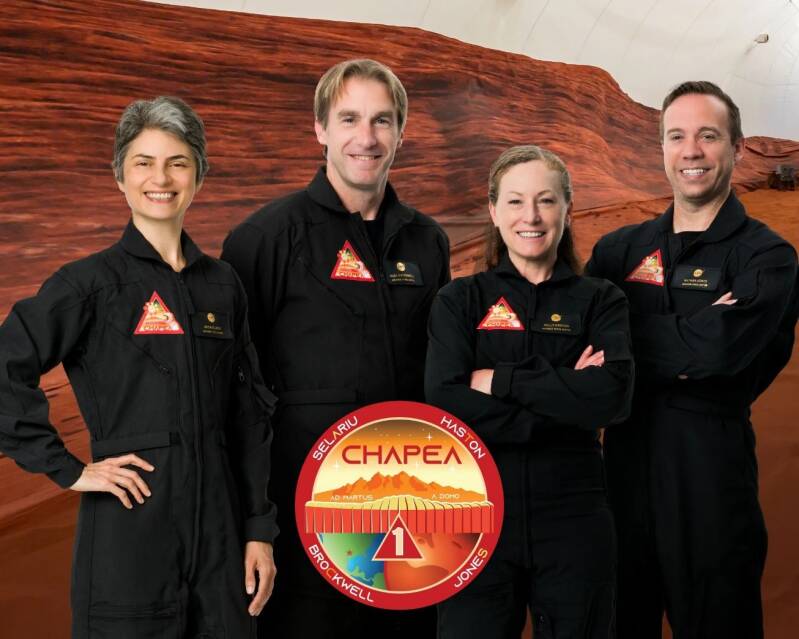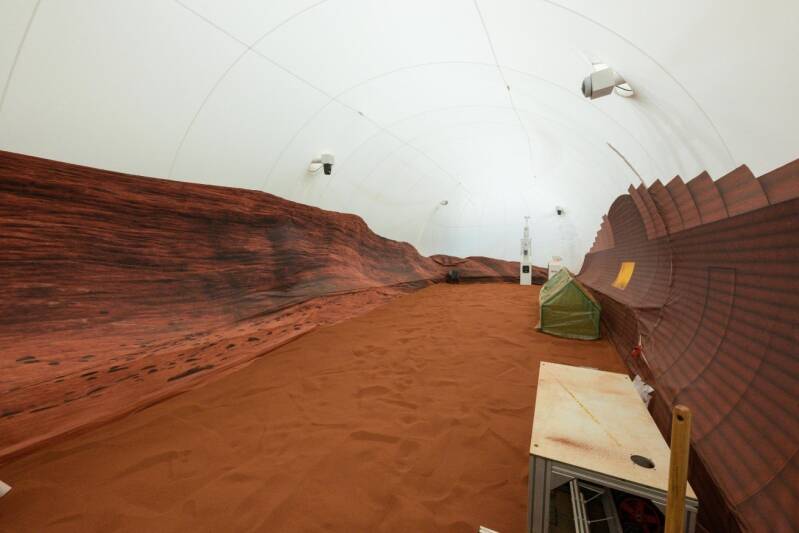The four volunteers who have been living and working inside NASA’s Mars simulation habitat are set to emerge after 378 days of confinement. The mission, known as CHAPEA (Crew Health and Performance Exploration Analog), has provided invaluable insights into the challenges of long-duration space travel and the psychological effects of isolation.

The Mission
The crew members, Kelly Haston, Anca Selariu, Ross Brockwell, and Nathan Jones were carefully selected for their diverse skills and backgrounds, have been living and working inside the simulated Mars habitat since June 2023. During their mission, they faced conditions akin to those on the Red Planet, including:
- Isolation: Communication delays with Earth, limited contact with family and friends, and the absence of natural outdoor environments.
- Resource Constraints: Relying on a closed-loop life support system, growing their own food, and managing limited supplies.
- Scientific Research: Conducting experiments, monitoring their health, and testing technologies crucial for future Mars missions.

Inside the Mars simulation Credit: Bill Stafford/NASA
Scientific Insights
The CHAPEA mission has yielded critical data for NASA's upcoming endeavors:
1. Psychosocial Resilience: How humans cope with prolonged isolation and confinement is crucial for planning future Mars missions. The crew's mental health, stress levels, and interpersonal dynamics have been closely monitored.
2. Human Factors: Researchers have studied crew performance, sleep patterns, and cognitive abilities. These findings will inform crew selection and training for deep-space missions.
3. Life Support Systems: The habitat's closed-loop systems—recycling water, air, and waste—have been rigorously tested. Lessons learned will enhance sustainability during long-duration spaceflights.
Exit and Welcome Ceremony
The crew's exit from the habitat will be broadcast live from the Johnson Space Center in Houston at 5 p.m. EDT. NASA officials, fellow astronauts, and excited well-wishers will welcome them back to Earth. The ceremony can be viewed on NASA+, NASA Television, the NASA app, the agency’s website, and NASA Johnson’s X and Facebook accounts.

The 1,700-square-foot CHAPEA habitat contains individual living quarters for four volunteer crew members.
Credit: NASA/Bill Stafford
A Step Towards Mars
Crew Health and Performance Exploration Analog (CHAPEA) is a series of analog missions that will simulate year-long stays on the surface of Mars. Each mission will consist of four crew members living in Mars Dune Alpha, an isolated 1,700 square foot habitat. During the mission, the crew will conduct simulated spacewalks and provide data on a variety of factors, which may include physical and behavioral health and performance.
The 3D printed habitat will include private crew quarters, a kitchen, and dedicated areas for medical, recreation, fitness, work, and crop growth activities, as well as a technical work area and two bathrooms.
Schedule
CHAPEA Missions:
1) Analog mission 1 – Began June 25, 2023
2) Analog mission 2 – Starting 2025
3) Analog mission 3 – Starting 2026
Why this is Important
The results of CHAPEA and the knowledge gained from the analog missions will allow NASA to characterize the risk of the planned exploration food system design in relation to crew health and performance and inform NASA standards, associated vehicle mass and volume requirements, and resource-risk trades for long-duration exploration missions.
Looking Ahead
As humanity sets its sights on Mars, the CHAPEA mission underscores the resilience, adaptability, and scientific curiosity of those who dare to explore the cosmos. These volunteers have paved the way for future astronauts, reminding us that the journey to another planet begins with small steps in simulated habitats.


Add comment
Comments